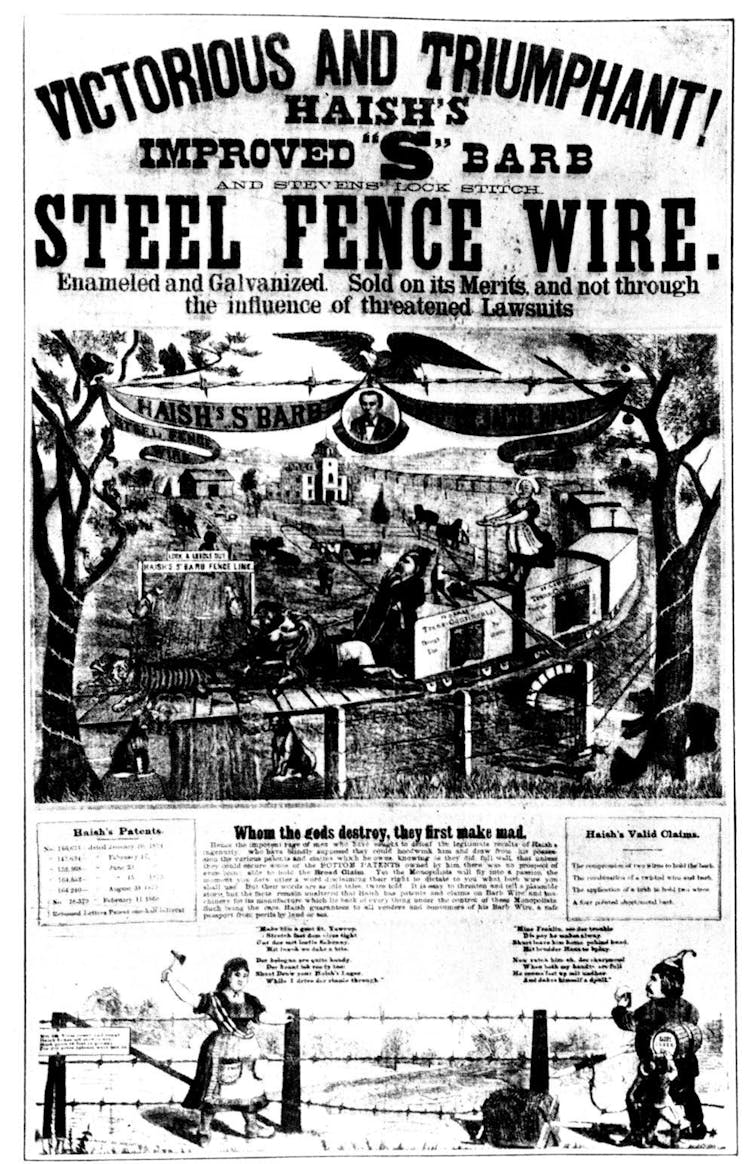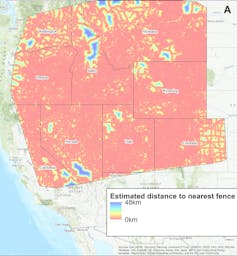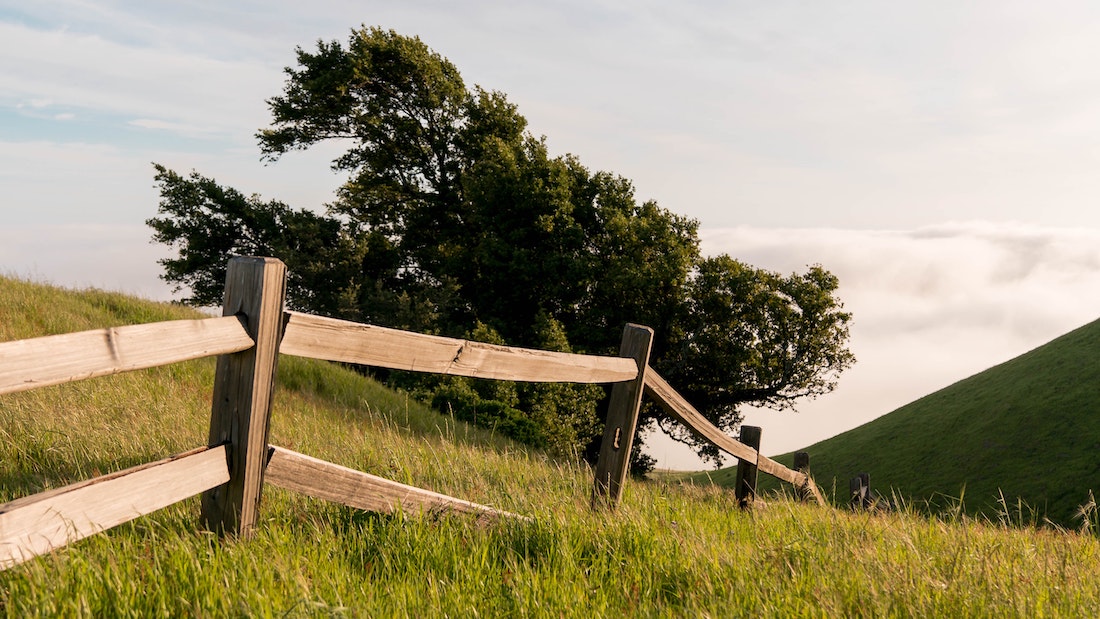On every continent, from cities to rural spots and from historical to contemporary periods, human beings have built fences. But we know pretty much absolutely nothing about their ecological effects. Border fences are frequently in the news, but other fences are so ubiquitous that they disappear into the landscape, turning out to be landscapes instead than topic.
In a lately printed research, our staff sought to transform this situation by providing a set of findings, frameworks, and concerns that can form the basis of a new self-discipline: fence ecology. By compiling studies from ecosystems all over the planet, our study reveals that fences develop a complex array of ecological consequences.
Some of them impact tiny-scale processes like the building of spider webs. Many others have substantially broader consequences, this kind of as hastening the collapse of Kenya’s Mara ecosystem. Our findings reveal a globe that has been totally reorganized by a rapidly expanding latticework of fences.
https://www.youtube.com/observe?v=H1dGSpA7cl4
Connecting the dots
If fences feel like an odd matter for ecologists to examine, consider that right up until lately no just one assumed significantly about how roads impacted the sites about them. Then, in a burst of exploration in the 1990s, researchers confirmed that streets – which also have been component of human civilization for millennia – had slender footprints but developed great environmental outcomes.
For case in point, roadways can demolish or fragment habitats that wild species count on to survive. They also can endorse air and drinking water air pollution and car collisions with wildlife. This operate created a new scientific self-control, road ecology, that presents unique insights into the startling extent of humanity’s achieve.
Our conclusions reveal a planet that has been completely reorganized by a speedily increasing latticework of fences.
Our exploration team became interested in fences by watching animals. In California, Kenya, China, and Mongolia, we had all observed animals behaving oddly around fences – gazelles getting very long detours all around them, for instance, or predators adhering to “highways” alongside fence strains.
We reviewed a huge system of tutorial literature searching for explanations. There were being several scientific studies of specific species, but every single of them advised us only a very little on its possess. Research experienced not however related the dots concerning many disparate results. By linking all these scientific tests together, we uncovered critical new discoveries about our fenced environment.

Kansas Historical Society, CC BY-ND
Remaking ecosystems
Most likely the most striking sample we observed was that fences hardly ever are unambiguously fantastic or undesirable for an ecosystem. In its place, they have myriad ecological results that create winners and losers, helping to dictate the regulations of the ecosystems the place they come about.
Even “good” fences that are designed to secure threatened species or restore delicate habitats can nonetheless fragment and isolate ecosystems. For example, fences constructed in Botswana to reduce condition transmission between wildlife and livestock have stopped migrating wildebeests in their tracks, creating haunting visuals of hurt and lifeless animals strewn alongside fencelines.
[Fences] have myriad ecological consequences that develop winners and losers, supporting to dictate the rules of the ecosystems where they happen.
Enclosing an area to shield one particular species may perhaps injure or eliminate other individuals, or build entry pathways for invasive species.
1 discovering that we consider is important is that for each individual winner, fences commonly produce many losers. As a result, they can build ecological “no man’s lands” exactly where only species and ecosystems with a slim array of characteristics can survive and thrive.
Altering locations and continents
Examples from all-around the earth display fences’ potent and generally unintended implications. The U.S.-Mexico border wall – most of which fits our definition of a fence – has genetically isolated populations of massive mammals this sort of as bighorn sheep, main to populace declines and genetic isolation. It has even had astonishing consequences on birds, like ferruginous pygmy owls, that fly very low to the ground.
Australia’s dingo fences, crafted to shield livestock from the nation’s iconic canines, are amongst the world’s longest person-designed buildings, stretching 1000’s of kilometers just about every. These fences have started off ecological chain reactions termed trophic cascades that have influenced an complete continent’s ecology.
The absence of dingoes, a major predator, from just one facet of the fence implies that populations of prey species like kangaroos can explode, triggering categorical shifts in plant composition and even depleting the soil of nutrition. On either aspect of the fence there now are two distinctive “ecological universes.”
Our evaluate shows that fences have an effect on ecosystems at just about every scale, major to cascades of alter that might, in the worst circumstances, culminate in what some conservation biologists have described as whole “ecological meltdown.” But this peril frequently is neglected.

McInturff et al,. 2020, CC BY-ND
To exhibit this place, we appeared far more carefully at the western U.S., which is acknowledged for big open up spaces but also is the homeland of barbed wire fencing. Our investigation shows that extensive places considered by researchers as rather untrodden by the human footprint are silently entangled in dense networks of fences.
Do less hurt
Fences evidently are right here to keep. As fence ecology develops into a self-discipline, its practitioners should take into account the complicated roles fences engage in in human social, financial and political programs. Even now, nevertheless, there is sufficient evidence to establish steps that could cut down their dangerous impacts.
There are quite a few approaches to modify fence design and design without the need of affecting their functionality. For illustration, in Wyoming and Montana, federal land administrators have experimented with wildlife-friendly types that permit species like pronghorn antelope to move by fences with fewer hurdles and accidents. This sort of modification reveals good assure for wildlife and could produce broader ecological advantages.
One more possibility is aligning fences along pure ecological boundaries, like watercourses or topographical functions. This method can assist limit their results on ecosystems at very low expense. And land businesses or nonprofit businesses could supply incentives for land entrepreneurs to take out fences that are derelict and no extended provide a function.
However, after a fence is developed its consequences are prolonged lasting. Even right after elimination, “ghost fences” can dwell on, with species continuing to behave as if a fence were still existing for generations.
Realizing this, we imagine that policymakers and landowners should be additional careful about putting in fences in the 1st location. Alternatively of contemplating only a fence’s small-time period intent and the landscape close by, we would like to see folks see a new fence as nonetheless yet another permanent backlink in a chain encircling the earth several periods in excess of.
![]()
This write-up is republished from The Dialogue beneath a Creative Commons license.
Top rated photo: Fran/Unsplash
